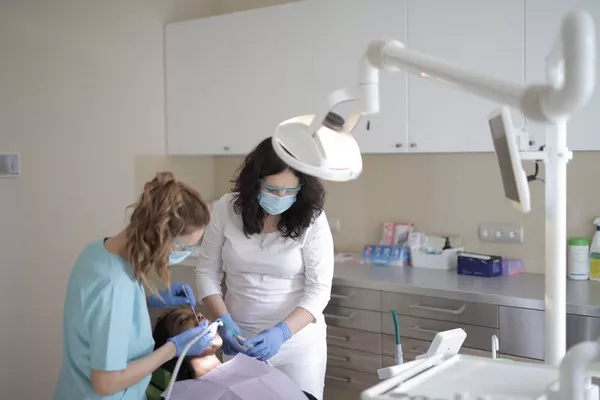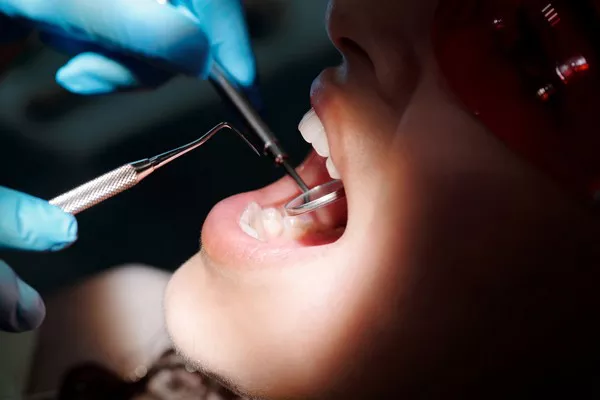A dental implant arch is a set of prosthetic teeth that are supported by dental implants implanted into the jawbone. It serves as a solution for replacing a full arch of teeth on either the upper or lower jaw, offering a permanent and stable alternative to traditional dentures.
Components
The components of a dental implant arch include dental implants, abutment posts, and prosthetic teeth or a bridge. Dental implants are titanium screws surgically placed into the jawbone to serve as artificial tooth roots. Abutment posts are connectors that attach to the implants and support the prosthetic teeth or bridge, which are custom-made to resemble natural teeth.
Procedure
The surgical procedure for placing a dental implant arch involves several steps. Initially, the dentist or oral surgeon assesses the patient’s oral health and jawbone structure through imaging techniques like X-rays or CT scans. The actual procedure typically begins with the administration of local anesthesia to ensure the patient’s comfort.
Using precision and minimally invasive techniques, the dentist or oral surgeon then places the dental implants into the jawbone at strategic locations to support the full arch of teeth. Depending on the specific technique used, this may involve anywhere from four to eight implants per arch. Once the implants are securely in place, temporary prosthetic teeth may be attached for aesthetic and functional purposes during the healing process.
After a period of osseointegration, during which the implants fuse with the surrounding bone, the final prosthetic teeth or bridge is attached to the implants via abutment posts. This completes the restoration, providing the patient with a natural-looking and fully functional set of teeth.
Benefits
Dental implant arches offer numerous benefits compared to traditional dentures. Firstly, they provide improved oral function, allowing patients to chew, speak, and smile with confidence. The stability provided by implants prevents slippage or movement of the prosthetic teeth, enhancing comfort and eliminating the need for adhesives.
Additionally, dental implant arches offer superior aesthetics, closely resembling natural teeth in both appearance and feel. This can significantly boost self-esteem and quality of life for individuals who have experienced tooth loss. Furthermore, implants stimulate the jawbone, preventing bone loss and preserving facial structure over time.
Types of Implant Arches
Several types of implant arches exist, with the most common being the All-on-4 technique. This method utilizes four dental implants strategically placed in the jaw to support a full arch of teeth. All-on-4 offers a less invasive and more cost-effective solution compared to traditional implant techniques, making it accessible to a wider range of patients.
Other variations include the All-on-6 and All-on-8 techniques, which utilize six or eight implants, respectively, for increased stability and support. These methods are typically recommended for patients with compromised bone density or those seeking maximum longevity and durability.
Candidacy
Ideal candidates for a dental implant arch are individuals who have lost a full arch of teeth or are facing the imminent loss of remaining teeth. Good oral health, adequate bone density, and overall medical fitness are essential factors in determining candidacy. Patients with insufficient bone volume may require bone grafting procedures to augment the jawbone and support the implants.
Maintenance
Caring for a dental implant arch is relatively straightforward and involves regular oral hygiene practices. Patients should brush and floss their teeth as they would natural teeth, paying extra attention to the areas around the implants and abutments. Routine dental check-ups are also crucial for monitoring the health and stability of the implants and addressing any issues promptly.
Costs and Insurance
The cost of a dental implant arch can vary depending on factors such as the number of implants, the complexity of the case, and the geographical location of the dental practice. On average, a single dental implant can range from $1,500 to $3,000, with the total cost for a full arch restoration typically falling between $20,000 and $40,000 per arch.
Unfortunately, many dental insurance plans do not cover the full cost of dental implant treatment, considering it a cosmetic or elective procedure. However, some plans may offer partial coverage for certain aspects of the treatment, such as initial consultations or prosthetic components. Patients are encouraged to consult with their insurance providers to understand their coverage options and potential out-of-pocket expenses.
Recovery and Aftercare
The recovery process following the placement of a dental implant arch varies from patient to patient but generally involves minimal discomfort and downtime. Patients may experience some swelling, bruising, or mild discomfort in the days following surgery, which can be managed with prescribed medications and cold compresses.
To promote optimal healing, patients should follow any post-operative instructions provided by their dental team, which may include dietary restrictions, oral hygiene recommendations, and follow-up appointments. Most individuals can resume normal activities within a few days to a week after surgery, although strenuous exercise and certain foods should be avoided during the initial healing period.
Success Rate and Longevity
Dental implant arches have demonstrated high success rates and can last a lifetime with proper care and maintenance. Studies have shown success rates upwards of 95% over ten years, making dental implants one of the most reliable options for tooth replacement. However, factors such as oral hygiene practices, lifestyle habits, and underlying medical conditions can influence the longevity of implant restorations.
Conclusion
A dental implant arch is a sophisticated and effective solution for replacing a full arch of missing teeth. By restoring oral function, aesthetics, and overall quality of life, dental implant arches offer patients a permanent and reliable alternative to traditional dentures. With advancements in technology and techniques, this innovative treatment option continues to evolve, providing patients with enhanced outcomes and improved long-term success.
FAQs about Dental Arches and Implants
1. What is considered a dental arch?
A dental arch refers to the curved arrangement of teeth within the upper or lower jaw. Each jaw typically contains one dental arch, which consists of a row of teeth that are supported by the surrounding bone and gums. The dental arch plays a crucial role in chewing, speaking, and maintaining facial aesthetics.
2. How many arches do you need for dental implants?
The number of arches needed for dental implants depends on the extent of tooth loss and the treatment plan recommended by the dentist. In some cases, patients may require implants for both the upper and lower dental arches to replace missing teeth and restore oral function and aesthetics.
3. Are full arch dental implants worth it?
Full arch dental implants, also known as All-on-4 or All-on-6 implants, are often considered worth it for individuals with extensive tooth loss or those seeking a permanent and stable solution for missing teeth. These implants offer numerous benefits, including improved chewing ability, enhanced aesthetics, and increased confidence. While the initial cost may be higher compared to traditional dentures, the long-term benefits and satisfaction provided by full arch implants make them a worthwhile investment for many patients.
4. What does per arch mean in implants?
“Per arch” refers to the number of dental implants required to support a full set of teeth in either the upper or lower jaw. For example, if a patient needs implants for both the upper and lower arches, the term “per arch” would indicate the number of implants needed for each individual arch. This terminology is commonly used in discussions regarding implant-supported prosthetics, such as All-on-4 or All-on-6 dental implants, where the number of implants per arch is a crucial factor in determining treatment outcomes.
You Might Be Interested In
































